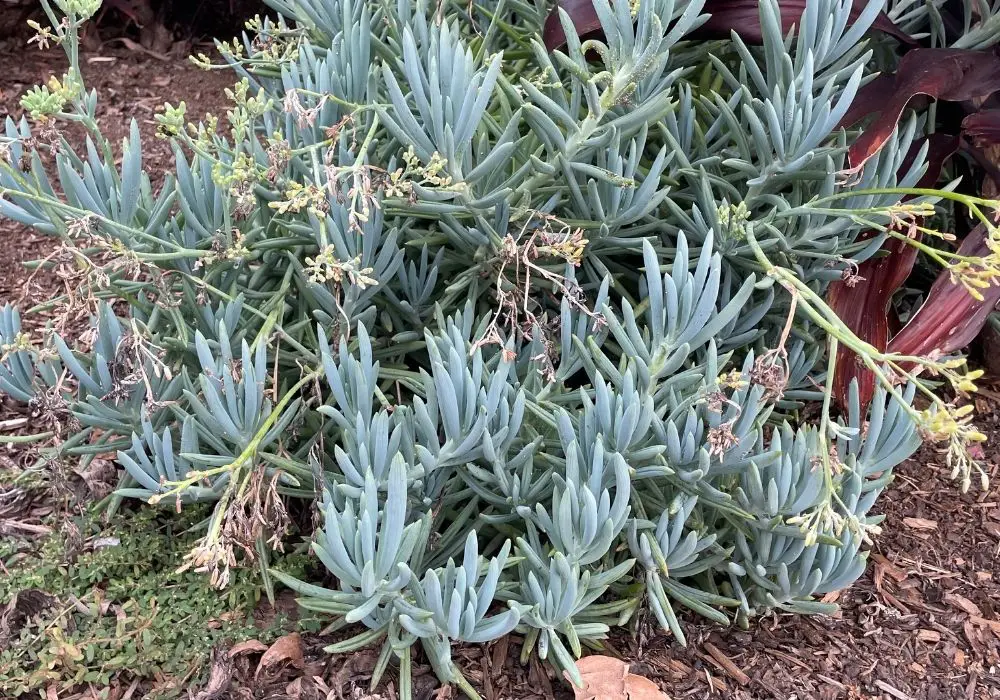The blue chalk stick succulent plant (Senecio Serpens) is used as a ground cover plant, used to fill in space at the bottom of a tree, as a runner in narrow spaces like between a fence and a driveway, or it can an indoor succulent kept in a pot by a bright spot.
With their bluey colour, they give your garden a unique look, and during their growth period in winter they will throw up some yellow flowers also.
They are easy to care for and to propagate. Read more below to see how to get your blue chalk sticks growing in no time.
Blue Chalk Sticks Quick Facts
| Common Names | Common names are blue chalk sticks, blue ice plant. |
| Scientific Name | Senecio serpens or senscio mandraliscae (similar plant). |
| Plant Type | Succulent |
| Sun/Light | Likes full sun, but can handle some shade from trees. |
| Frost/Snow | Doesn’t like frost or snow, and slows growth during its winter growth season. |
| Size | Can grow up to 30cm (12″) high and 60-90cm (2-3′) wide. |
| Water | Doesn’t like to be overwatered, needs dry spells between deep watering. |
| Soil | Well draining soil (similar to succulent/cactus potting medium). |
| Fertilizer | Fertilize once per year before the growing season. |
| Pests & Diseases | Susceptible to rot and mealy bugs. Resistant to fire, rabbits and deer. |
| Toxicity | Toxic to humans and animals. |
| Growing Season | Grows during winter, dormant and flowers in the summer. |
| Propagation | View our propagation guide here. Can be germinated from seeds, or cuttings can be rooted in water or soil. |
Light And Temperature
Blue chalk sticks like to have full sunlight. So if you are planning on planting them under a tree or to keep them indoors make sure that it will get at least 6+ hours of direct sunlight.
Soil
Being a succulent plant, the blue chalk sticks like good draining soil.
Watering
The blue chalk stick succulent plant likes to have dry spells between watering. Overwatering is one of the main reasons that it will fail.
The climate for where you are will determine how frequently they need to be watered, but a good guide is that once the top inch of soil is bone dry then you can give it a good soak.
Common Problems When Growing Blue Chalk Sticks
Root Rot
When blue chalk sticks are overwatered or have poor draining soil they can develop root rot.
If this is the case simply change your watering cycle to be less frequent with deeper watering. Or if the soil doesn’t drain well you may need to consider digging up your plant to replace the soil with more suitable soil.
Mealybugs
There are numerous different ways to remove mealybugs from plants. If you notice that your blue chalk stick plant has them work your way through the various methods to find one that suits your garden and climate best.
Different methods to remove mealybugs include:
- Wash them away with your watering hose,
- Neem oil,
- Swab with isopropyl alcohol,
- Spray With Insecticidal Soap, and as a last resort
- Synthetic Chemical Pesticide (my least preferred option).
.


